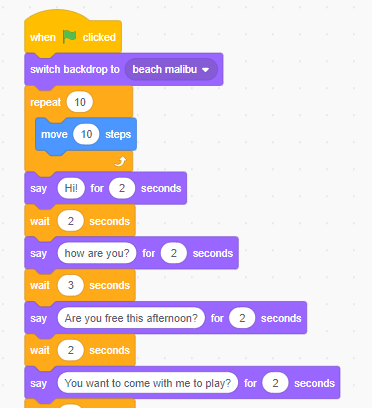|
Lego Mindstorms EV3
LEGO Mindstorms EV3 (stylized: LEGO MINDSTORMS EV3) is the third and final generation of LEGO's Mindstorms robotics kit line. It is the successor to the second generation LEGO Mindstorms NXT kit. The "EV" designation refers to the "evolution" of the Mindstorms product line. "3" refers to the fact that it is the third generation of computer modules - first was the RCX and the second is the NXT. It was officially announced on January 4, 2013, and was released in stores on September 1, 2013. The education edition was released on August 1, 2013. There are many competitions using this set, including the FIRST LEGO League Challenge and the World Robot Olympiad, sponsored by LEGO. After an announcement in October 2022, The Lego Group officially discontinued ''Lego Mindstorms'' at the end of 2022. Overview The biggest change from the LEGO Mindstorms NXT and NXT 2.0 to the EV3 is the technological advances in the programmable brick. The main processor of the NXT was an ARM7 microc ... [...More Info...] [...Related Items...] OR: [Wikipedia] [Google] [Baidu] |
Lego Mindstorms EV3 Brick
Lego (, ; ; stylised as LEGO) is a line of plastic Construction set, construction toys manufactured by the Lego Group, a privately held company based in Billund, Denmark, Billund, Denmark. Lego consists of variously coloured Interchangeable parts, interlocking plastic bricks made of acrylonitrile butadiene styrene (ABS) that accompany an array of gears, figurines called Lego minifigure, minifigures, and various other parts. Its pieces can be assembled and connected in many ways to construct objects, including vehicles, buildings, and working robots. Assembled Lego models can be taken apart, and their pieces can be reused to create new constructions. The Lego Group began manufacturing the interlocking toy bricks in 1949. Moulding is done in Denmark, Hungary, Mexico, and China. Brick decorations and packaging are done at plants in the former three countries and in the Czech Republic. Annual production of the bricks averages approximately 36 billion, or about 1140 elements ... [...More Info...] [...Related Items...] OR: [Wikipedia] [Google] [Baidu] |
CubeStormer II
CubeStormer II is a robot built primarily with Lego Mindstorms and a Samsung Galaxy S2 for solving a Rubik's Cube. The project was commissioned by ARM Holdings and designed and built by Mike Dobson and David Gilday. CubeStormer II set a Guinness World Record of 5.270s for the fastest robot solving a Rubik's Cube on 11 November 2011 in the presence of the editor-in-chief of Guinness World Records in Wired.co.uk's offices in London.Duncan Geere"Video: CubeStormer II robot beats Rubik's Cube speed record". ''Wired (magazine) ''Wired'' is a bi-monthly American magazine that focuses on how emerging technologies affect culture, the economy, and politics. It is published in both print and Online magazine, online editions by Condé Nast. The magazine has been in public ...'', 11/11/2011. The record has already been beaten by its successor, the CubeStormer III, which is controlled by a Samsung Galaxy S4, the new record is now 3.253 seconds. References External links * * ... [...More Info...] [...Related Items...] OR: [Wikipedia] [Google] [Baidu] |
Guinness World Records
''Guinness World Records'', known from its inception in 1955 until 1999 as ''The Guinness Book of Records'' and in previous United States editions as ''The Guinness Book of World Records'', is a British reference book published annually, listing world records both of human achievements and the extremes of the natural world. Sir Hugh Beaver created the concept, and twin brothers Norris and Ross McWhirter co-founded the book in London in August 1955. The first edition topped the bestseller list in the United Kingdom by Christmas 1955. The following year the book was launched internationally, and as of the 2025 edition, it is now in its 70th year of publication, published in 100 countries and 40 languages, and maintains over 53,000 records in its database. The international franchise has extended beyond print to include television series and museums. The popularity of the franchise has resulted in ''Guinness World Records'' becoming the primary international source for cata ... [...More Info...] [...Related Items...] OR: [Wikipedia] [Google] [Baidu] |
CubeStormer III
CubeStormer 3 is a robot built primarily with Lego Mindstorms and the Samsung Galaxy S4. On 15 March 2014, at the Big Bang fair in Birmingham, England, the CubeStormer 3 broke the previous record, held by its predecessor, the CubeStormer II, for the fastest time to solve a Rubik's Cube. The previous Guinness World Records time was 5.270 seconds. The official time taken to solve the Rubik's Cube by the ''CubeStormer 3'' was 3.253 seconds. This robot was created by inventors David Gilday and Mike Dobson. It took the two of them 18 months to perfect the technology of this robot. The robot was able to conquer the cube by use of four robotic hands. The robot is made out of LEGO and ARM architecture ARM (stylised in lowercase as arm, formerly an acronym for Advanced RISC Machines and originally Acorn RISC Machine) is a family of reduced instruction set computer, RISC instruction set architectures (ISAs) for central processing unit, com .... Gilday and Dobson hope to beat thei ... [...More Info...] [...Related Items...] OR: [Wikipedia] [Google] [Baidu] |
Braille Is Your Own Date Embosser
Braille ( , ) is a tactile writing system used by blind or visually impaired people. It can be read either on embossed paper or by using refreshable braille displays that connect to computers and smartphone devices. Braille can be written using a slate and stylus, a braille writer, an electronic braille notetaker or with the use of a computer connected to a braille embosser. For blind readers, braille is an independent writing system, rather than a code of printed orthography. Braille is named after its creator, Louis Braille, a Frenchman who lost his sight as a result of a childhood accident. In 1824, at the age of fifteen, he developed the braille code based on the French alphabet as an improvement on night writing. He published his system, which subsequently included musical notation, in 1829. The second revision, published in 1837, was the first binary form of writing developed in the modern era. Braille characters are formed using a combination of six raised dot ... [...More Info...] [...Related Items...] OR: [Wikipedia] [Google] [Baidu] |
Braille Printer
A braille embosser is an impact printer that renders text as tactile braille cells. Using braille translation software, a document or digital text can be embossed with relative ease. This makes braille production efficient and cost-effective. Braille translation software may be free and open-sourced or paid. Braille embossers can emboss single-sided or double-sided (called interpoint) and can produce 6- or 8-dot braille. Blind users tend to call other printers "ink printers," to distinguish them from their braille counterparts. This is often the case regardless of the type of printer being discussed (e.g., thermal printers being called "ink printers" even though they use no ink). As with ink printers and presses, embossers range from those intended for consumers to those used by large publishers. The price of embossers increase with the volume of braille it produces . Types The fastest industrial braille embosser is probably the $92,000 Belgian-made NV Interpoint 55, fi ... [...More Info...] [...Related Items...] OR: [Wikipedia] [Google] [Baidu] |
Braigo
Braigo (Brai-lle +Le-go) is a Braille printer design. Braigo version 1.0 uses a Lego Mindstorms EV3 kit, which includes a microprocessor with assorted components such as electric motors, sensors and actuators. Braigo v1.0 was designed by 13-year-old Shubham Banerjee in January 2014, as an entry in 7th grade school science fair project. The model was based on the PLOTT3R, a bonus model released with the EV3 kit and originally designed by Ralph Hempel. The cost was said to be about US$350 or 250 Euros for the Lego Mindstorms EV3 kit and some extra commonly used hardware whereas a conventional Braille printer retails starting from about $1,900. In August 2014, a new company called Braigo Labs Inc. was formed with an office in Palo Alto, California. Since Shubham Banerjee was a minor, his mother Malini is listed as the President of the company and the law firm Inventus Law acting as advisor. On September 9, 2014, at the Intel Developers Forum (IDF 2014), Banerjee demonstrated 'Braig ... [...More Info...] [...Related Items...] OR: [Wikipedia] [Google] [Baidu] |
Scratch (programming Language)
Scratch is a High-level programming language, high-level, block-based visual programming language and website aimed primarily at children as an educational tool, with a target audience of ages 8 to 16. Users on the site can create projects on the website using a block-like interface. Scratch was conceived and designed through collaborative National Science Foundation grants awarded to Mitchel Resnick and Yasmin Kafai. Scratch is developed by the MIT Media Lab and has been translated into 70+ languages, being used in most parts of the world. Scratch is taught and used in after-school centers, schools, and colleges, as well as other public knowledge institutions. As of 15 February 2023, community statistics on the language's official website show more than 123 million projects shared by over 103 million users, and more than 95 million monthly website visits. Overall, more than 1.15 billion projects have been created in total, with the site reaching its one billionth project on A ... [...More Info...] [...Related Items...] OR: [Wikipedia] [Google] [Baidu] |
H8 Family
The Hitachi H8 is a large family of 8-bit, 16-bit and 32-bit microcontrollers made by Renesas Technology, originating in the early 1990s within Hitachi Semiconductor. The original design, the H8/300, was an 8-bit processor that had a 16-bit registers and ALU that allowed some 16-bit operations. Two upgraded versions were introduced, the H8/300L that expanded the instructions to become a full 16-bit machine while being optimized for low cost, and the H8/300H which further expanded the registers to allow 32-bit operations and was optimized for low-power/high-performance roles. Many variations exist. The entire line was sold to Renesas in 2003. Renesas continues to sell the designs , but only to existing customers. An administrator on the Renesas user community boards commented in 2011 that there are no plans for further development of H8 based products. H8 was supported in the Linux kernel starting with version 4.2 but support was removed in version 5.19. For higher performanc ... [...More Info...] [...Related Items...] OR: [Wikipedia] [Google] [Baidu] |






